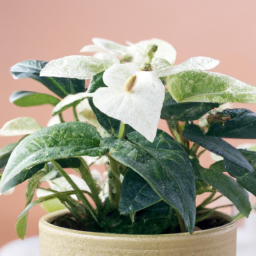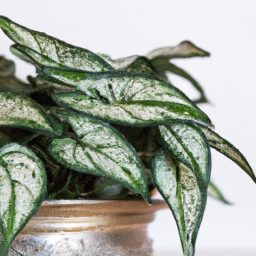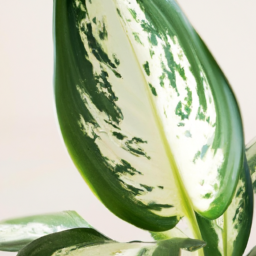
Winter can be a challenging time for both our mood and our surroundings. As the days get shorter and the temperatures drop, we often find ourselves spending more time indoors. While the cozy atmosphere can be comforting, it’s also important to bring some life and vibrancy into our homes during this season. That’s where indoor plants for winter come in. These green companions not only add a touch of nature to our living spaces but also offer numerous benefits for our well-being. In this blog post, we will explore the best indoor plants to brighten up your winter days and bring a breath of fresh air into your home. So, let’s dive into the world of indoor plants and discover which ones are perfect for the winter season.
Benefits of Indoor Plants for Winter
Introduction
As the winter months approach, many of us find ourselves spending more time indoors. This can lead to a feeling of being disconnected from nature. However, by incorporating indoor plants into our living spaces, we can bring a touch of greenery and reap numerous benefits. In this article, we will explore the advantages of having indoor plants during winter and how they can enhance our well-being.
Improved Air Quality
One of the primary benefits of having indoor plants during winter is the improvement in air quality. During this time, we tend to keep our windows closed to conserve heat, leading to a buildup of indoor pollutants. Indoor plants act as natural air purifiers, absorbing harmful toxins and releasing oxygen. They can filter out common pollutants such as formaldehyde, benzene, and carbon monoxide, creating a healthier indoor environment.
Furthermore, indoor plants increase humidity levels by releasing moisture through a process called transpiration. This can be especially beneficial during winter when the air tends to be drier due to heating systems. By increasing humidity, indoor plants help prevent dry skin, respiratory issues, and even reduce the risk of cold and flu symptoms.
Lastly, indoor plants have been found to reduce the levels of airborne dust particles. Their leaves trap and hold onto dust, preventing it from circulating in the air. This can be particularly helpful for individuals with allergies or asthma, as it minimizes potential triggers.
Enhanced Mental Well-being
Winter often brings shorter days and less exposure to natural sunlight, which can negatively impact our mood and mental well-being. Indoor plants can help combat these effects by providing a connection to nature and greenery. Research has shown that simply being around plants can reduce stress, anxiety, and even improve concentration and productivity.
Indoor plants also have a calming effect on our minds. Their presence can create a sense of tranquility and relaxation, making our indoor spaces more inviting and peaceful. This is especially important during the winter months when we may spend more time indoors, seeking refuge from the cold weather.
Moreover, indoor plants can improve our overall happiness and satisfaction with our living environment. Taking care of plants and watching them grow can be a fulfilling and rewarding experience. It gives us a sense of purpose and responsibility, fostering a positive mindset.
Health Benefits
Indoor plants offer various health benefits that are particularly valuable during the winter season. Firstly, they can help alleviate symptoms of Seasonal Affective Disorder (SAD). SAD is a type of depression that occurs during the winter months when natural light is limited. Indoor plants provide a visual reminder of life and growth, helping to combat the feelings of sadness and lethargy associated with SAD.
In addition, indoor plants can improve our sleep quality. Certain plants, such as lavender and jasmine, emit calming scents that promote relaxation and better sleep. By placing these plants in our bedrooms, we can create a soothing environment conducive to a restful night’s sleep.
Furthermore, indoor plants have been shown to boost our immune system. They release phytoncides, natural airborne chemicals that can strengthen our resistance to illnesses. By having indoor plants during winter, we can potentially reduce the risk of falling ill and enhance our overall well-being.
Conclusion
Indoor plants bring numerous benefits during the winter months. From improving air quality to enhancing mental well-being and providing health benefits, they are a valuable addition to any indoor space. By incorporating indoor plants into our homes and workplaces, we can create a healthier, happier, and more vibrant environment. So, embrace the greenery and enjoy the advantages of indoor plants this winter!

Best Indoor Plants for Winter Survival
During the winter months, many outdoor plants struggle to survive due to the harsh weather conditions. However, bringing some greenery indoors can help brighten up your space and provide a refreshing touch of nature. In this article, we will explore the best indoor plants for winter survival, ensuring that you can enjoy their beauty and benefits all year round.
1. Peace Lily
The Peace Lily (Spathiphyllum) is a popular choice for indoor plants, especially during winter. It thrives in low light conditions, making it an excellent option for areas with limited sunlight during the colder months. The Peace Lily also helps improve indoor air quality by removing toxins such as formaldehyde and benzene.
When caring for a Peace Lily, ensure that the soil remains consistently moist but not overly saturated. It is essential to avoid overwatering, as this can lead to root rot. Mist the leaves occasionally to increase humidity, especially if your home tends to be dry during winter. Keep the plant away from drafty areas and cold windows to prevent temperature shock.
With its elegant white flowers and glossy leaves, the Peace Lily adds a touch of serenity to any indoor space, making it an ideal choice for winter survival.
2. Snake Plant
The Snake Plant (Sansevieria) is a hardy indoor plant that can withstand neglect and low light conditions, making it an excellent option for winter survival. It is known for its long, upright leaves with unique patterns, adding a decorative element to your home.
This plant is highly adaptable and can thrive in various environments, including low humidity. It is an excellent choice for beginners or those who tend to forget about their plants. The Snake Plant is also known for its air-purifying properties, removing toxins such as formaldehyde and xylene from the air.
When caring for a Snake Plant, allow the soil to dry between waterings to prevent root rot. It is a drought-tolerant plant that can survive in dry conditions. Place it in a well-draining pot and avoid overwatering, especially during winter when the plant’s growth slows down.
3. Spider Plant
The Spider Plant (Chlorophytum comosum) is a popular choice for indoor gardening, thanks to its vibrant green and white striped leaves. It is a resilient plant that can adapt to various light conditions, making it suitable for winter survival.
This plant thrives in bright, indirect light but can tolerate lower light levels. It is also known for its air-purifying abilities, removing toxins like formaldehyde and carbon monoxide from the air. The Spider Plant is a great choice for those who want to add a touch of greenery to their homes without requiring much maintenance.
When caring for a Spider Plant, water it thoroughly and allow the soil to dry slightly between waterings. Avoid overwatering, as it can lead to root rot. Spider Plants prefer slightly humid environments, so misting the leaves or placing a tray filled with water near the plant can help increase humidity levels during winter.
In conclusion, the Peace Lily, Snake Plant, and Spider Plant are among the best indoor plants for winter survival. Their ability to thrive in low light conditions and tolerate neglect make them ideal choices for the colder months. Additionally, these plants provide various benefits such as air purification and adding a decorative touch to your home. Remember to adjust your watering routine and provide adequate humidity to ensure the health and well-being of these indoor plants during winter.

Tips for Caring for Indoor Plants During Winter
Winter can be a challenging time for indoor plants. The dry air, lack of sunlight, and fluctuating temperatures can all take a toll on their health. However, with the right care and attention, you can help your indoor plants thrive during the winter months. In this article, we will provide you with some expert tips on how to care for your indoor plants during winter.
1. Adjusting Light and Temperature
During winter, the days are shorter and the sunlight is weaker, which can negatively impact the growth of indoor plants. To compensate for the lack of natural light, you can move your plants closer to windows or use artificial lighting. Place them in south-facing windows where they can receive the maximum amount of sunlight. If natural light is limited, consider using fluorescent or LED grow lights.
It’s also important to regulate the temperature around your indoor plants. Avoid placing them near drafts or heating vents, as the sudden temperature changes can stress the plants. Maintain a consistent temperature between 60-75°F (15-24°C) during the day and slightly cooler at night. Remember that some plants have specific temperature requirements, so it’s essential to research and cater to their needs.
Additionally, be cautious of overwatering during winter. The lower light levels and cooler temperatures can slow down the plant’s growth, leading to reduced water requirements. Always check the soil moisture before watering and make sure to use room temperature water to avoid shocking the roots.
2. Humidity and Air Circulation
Indoor environments tend to have lower humidity during winter due to the use of heating systems. This can cause the air to become dry, which is not ideal for most indoor plants. To increase humidity, you can use a humidifier or place a tray filled with water near your plants. As the water evaporates, it will create a more favorable environment for your plants.
However, it’s important to strike a balance. Excessive moisture can lead to fungal diseases and root rot. Ensure proper air circulation by opening windows occasionally, even for a short period, to allow fresh air to circulate. Avoid placing plants too close together, as this can restrict air movement and increase the risk of diseases.
Another effective method to increase humidity is by grouping plants together. As they release moisture through transpiration, the collective effect can create a microclimate with higher humidity. Just make sure to monitor the plants closely and adjust watering accordingly.
3. Pruning and Fertilizing
Winter is a good time to prune and tidy up your indoor plants. Remove any dead or yellowing leaves, as they can attract pests or diseases. Pruning also helps to shape the plant and promote new growth. Use clean and sharp pruning shears to avoid damaging the plant.
While indoor plants generally require less fertilization during winter, it’s still important to provide them with essential nutrients. Choose a slow-release fertilizer or dilute liquid fertilizer and apply it sparingly. Over-fertilizing can lead to salt buildup in the soil, causing root damage. Follow the instructions on the fertilizer packaging and adjust the frequency based on the plant’s needs.
Remember, each plant is unique, and it’s essential to understand their specific care requirements. Research the individual needs of your indoor plants and monitor them closely during winter. By providing the right conditions and care, you can ensure that your indoor plants not only survive but thrive during the colder months.
In a Nutshell
Winter can be a challenging time for plant lovers. As temperatures drop and the days become shorter, it becomes harder for plants to thrive outdoors. However, this doesn’t mean that you have to give up on your green thumb during the winter months. Indoor plants are the perfect solution to bring some life and color into your home, even when it’s freezing outside.
One of the best indoor plants for winter is the snake plant. Not only is it incredibly easy to care for, but it also thrives in low light conditions, making it perfect for those gloomy winter days. With its long, sword-like leaves, the snake plant adds a touch of elegance to any room. Another great option is the pothos plant. Known for its trailing vines, this plant is a great addition to any space that needs a little extra greenery. It can tolerate a wide range of lighting conditions, making it a versatile choice for any room in your home.
Here are some questions from our readers:
Q1: What are the best indoor plants for winter?
A1: The best indoor plants for winter are those that can thrive in low light conditions and tolerate cooler temperatures. Some popular options include snake plants, pothos, ZZ plants, peace lilies, and spider plants. These plants are known for their ability to purify the air and require minimal care.
Q2: How do I care for indoor plants during winter?
A2: During winter, it’s important to adjust your indoor plant care routine to accommodate the lower light levels and drier indoor air. Here are a few tips:
– Place your plants near windows to maximize sunlight exposure.
– Water your plants less frequently as they tend to require less water in winter.
– Increase humidity around your plants by using a humidifier or placing a tray filled with water near them.
– Avoid placing plants near drafts or heat sources, as they can cause stress to the plants.
Q3: Can indoor plants survive in a cold room during winter?
A3: While most indoor plants can tolerate cooler temperatures during winter, it’s important to avoid exposing them to extremely cold rooms or drafts. Most indoor plants prefer temperatures between 60-75°F (15-24°C). If the room temperature consistently drops below this range, it may negatively impact the health of your plants. Consider moving them to a warmer area or providing additional insulation if needed.
Q4: How do I prevent common winter plant problems?
A4: To prevent common winter plant problems, keep the following in mind:
– Avoid overwatering your plants as they tend to require less water during winter.
– Ensure proper drainage to prevent root rot.
– Dust the leaves regularly to allow maximum light absorption.
– Check for pests regularly as they can be more prevalent during winter.
– Maintain a consistent temperature and avoid placing plants near cold drafts or heat sources.
Q5: Can I use artificial light to supplement natural light for indoor plants in winter?
A5: Yes, you can use artificial light to supplement natural light for your indoor plants during winter. LED grow lights are a popular choice as they provide the necessary light spectrum for plant growth and are energy-efficient. Place the lights close to the plants, ensuring they receive around 12-16 hours of light per day. This can help compensate for the reduced daylight hours and ensure your plants receive sufficient light for healthy growth.

James Wong is a renowned ethnobotanist, plant scientist, and local television presenter. With a passion for demystifying plant science, he is known for translating complex botanical concepts into practical advice for everyday plant enthusiasts. James’s expertise spans from traditional gardening to cutting-edge plant technologies, making his insights accessible and informative.


